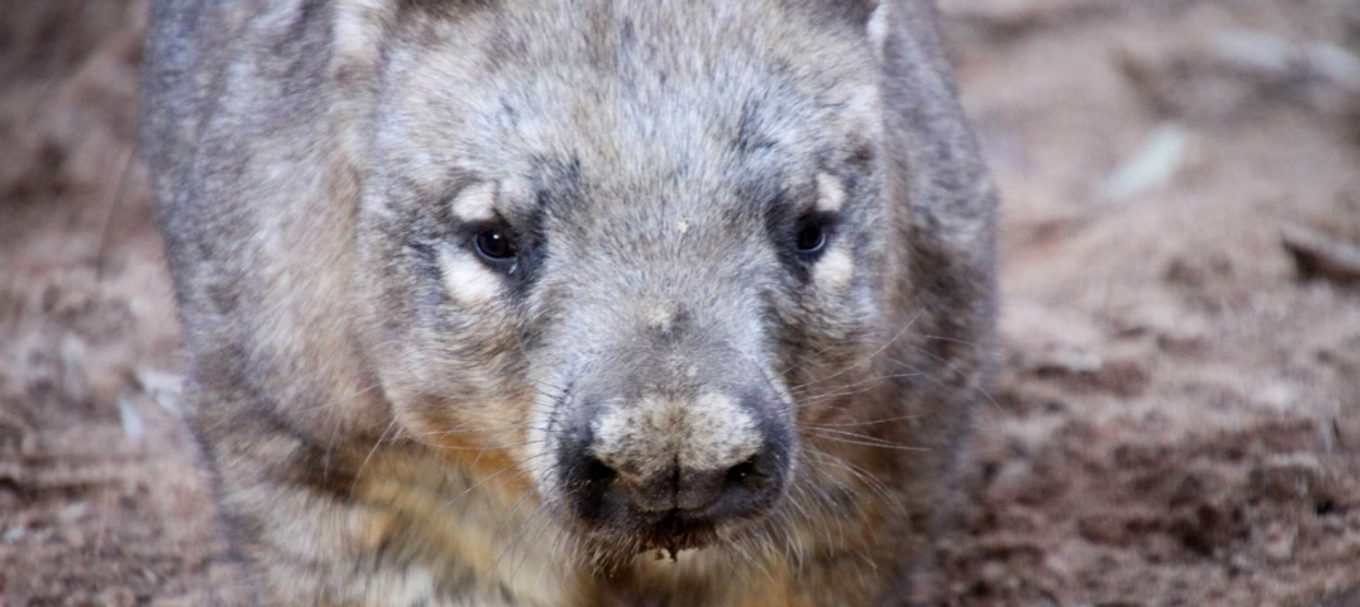
10 things you might not know about wombats
Get to know South Australia’s most commonly-sighted wombat species – which can run almost as fast as Usain Bolt.
Been out bushwalking and heard a rustle in the scrub? Maybe it was one of these guys. Wombats are full of surprises and mystery – find out more about these fascinating marsupials with these 10 fun facts.
1. Speedy Gonzales
These furry marsupials sure are stocky, but don’t let that fool you! They can run at speeds of up to 40 kilometres per hour, which is just under retired sprinter Usain Bolt’s fastest recorded speed!
2. State emblem superstars
The southern hairy-nosed wombat is the state fauna emblem of South Australia. They are found in the south-east of Western Australia and in southern South Australia.
3. The cube-poo champion
You’ll never mistake a wombat poo for any other animal’s, because wombats are famous for doing cubed-shaped poo – pumping out around 100 of these a day. Long story short, it’s all to do with their very slow digestive process.
4. Backwards pouch, forward thinking
As a marsupial, the southern hairy-nosed wombat has a backwards facing pouch where the young develop. The direction of the pouch means the joey is protected from dirt if the mother is digging. How convenient is that!
5. Built for burrowing
Wombats have a strong, stocky build with short legs and large front feet. Their feet have flattened claws and five digits. The second and third toes of their hind feet are fused and have a double claw used for grooming.
6. Joey life 101
Wombats usually give birth to a single joey, which is blind and hairless and weighs about 2 grams. It crawls into its mother’s pouch and attaches to one of its mum’s two teats, which will swell around the joey’s mouth, fixing it to the teat so it doesn’t fall out of the pouch. The joey stays in the pouch for 8 to 9 months. After emerging it will still suckle but also start eating solid food, and will stay with its mother for another year or more.
7. Wombat wisdom
A group of wombats is called a ‘wisdom of wombats’ a ‘mob of wombats’ or a ‘colony of wombats’. The name wombat comes from the Darug language, spoken by the Traditional Owners of Sydney.
8. Blinky Bill's cousin
Wombats closest relatives are koalas – if you check out their noses you’ll see they are pretty similar. Unlike koalas though, which sit upright, wombats are horizontal and their mammalian spine is designed to be supported at the shoulders and hips by their legs. Because of their horizontal structure, they have far less spinal issues than koalas and humans.
9. Olympic high-jumpers
Believe it or not, wombats can jump! Some have been known to jump over metre-high fences!
10. A true blue TV star
Fatso the Wombat, who starred in television series ‘A Country Practice’, was played by three different wombats named ‘Fatso’, ‘George’ and ‘Garth’.
Learn more about South Australia’s furry creatures by reading our blogs on how to identify animal poo and what to do if you see koala nearby this spring.
Stay in the know: Sign up to get updates from DEW, straight to your inbox!





